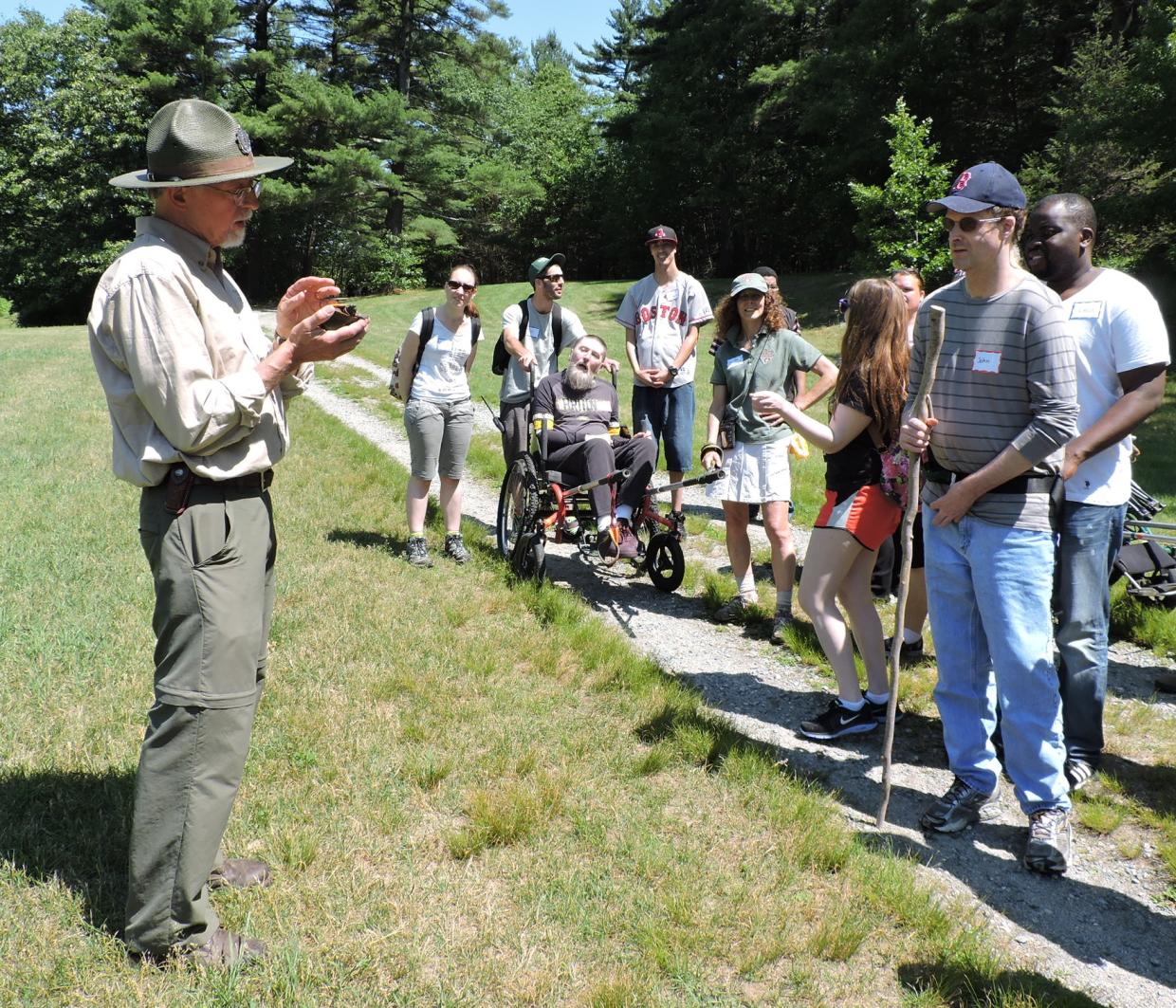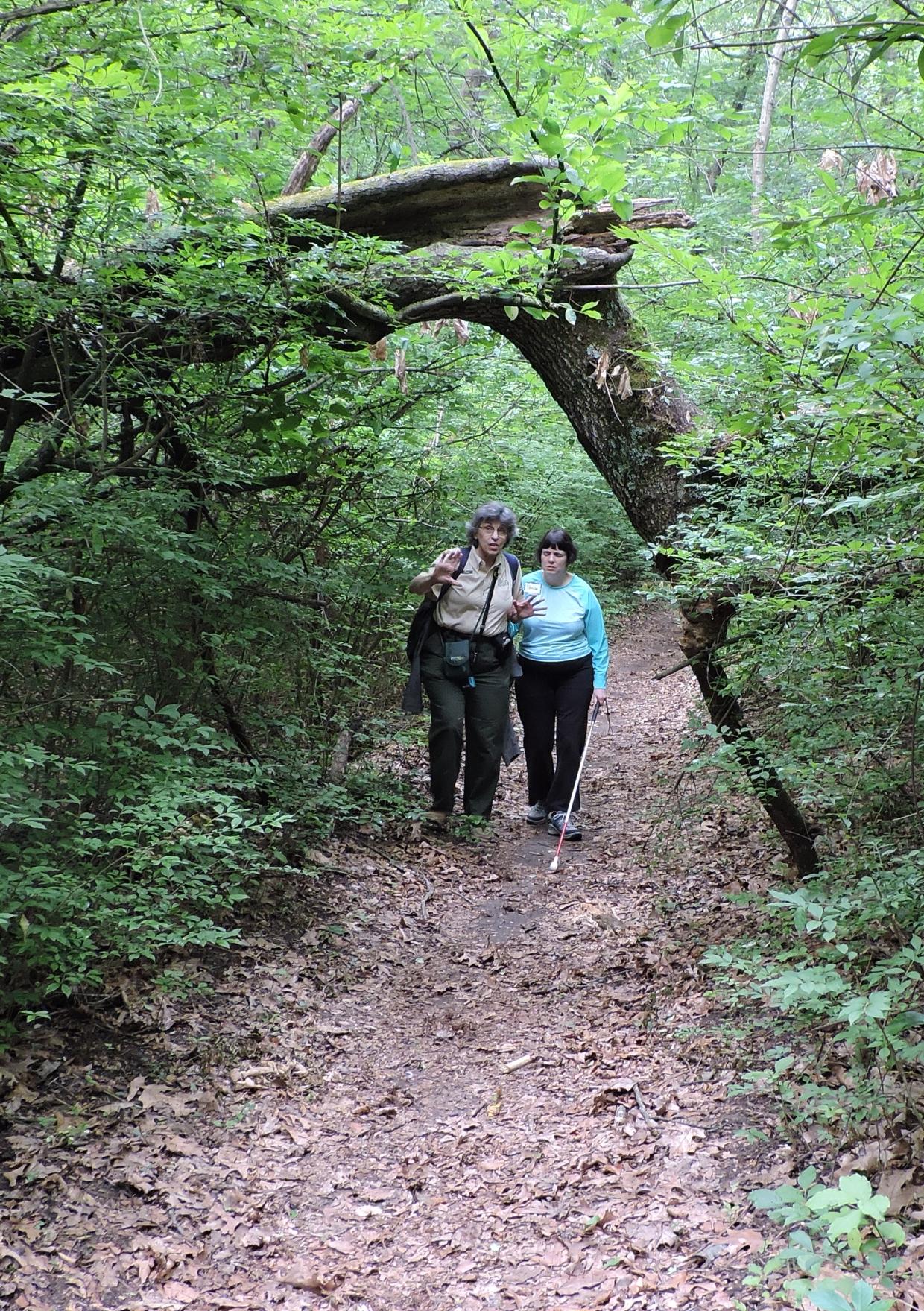Hiking programs
Our programs take place during a single day at DCR parks, forests and reservations across the state. These hikes offer staff and adaptive equipment, and each hike has a different theme based on the location and the group. Your hike might centered around a central goal like communication or perseverance, and lessons might include packing a backpack, practicing Leave No Trace (LNT) principles, navigating with a map and compass, and many more. You'll enjoy beautiful trails and locations, and learn about the natural and cultural resources of the area. Our group hikes mix hikers of different abilities and travel at a pace inclusive of everyone.
Our adaptive hiking programs are typically offered April through October. Hikers must pre-register for the program, and need to meet our essential eligibility criteria for hiking. To see the current program schedule and register for current programs, please visit our adaptive program schedule. If you would like to get on our mailing list to find out about upcoming hikes, please contact us.
Hiking wheelchairs
The all-terrain wheelchairs at our programs let you navigate rugged terrain. If you're athletic, you can move the chair on your own. Our programs usually use teamwork and staff support to hike the trails and navigate the terrain. You can use a chair for the whole hike, or we can bring one along to offer a break for anyone who can't walk the whole distance.
One brand of chair we use is the Terra Trek chair by Motion Concepts. These chairs come in several different sizes and have angled seating, mountain bike tires, and large front casters. The footplates are adjustable for different heights and leg angles. We’ve added handles on the back of the chairs and removable rickshaw poles that let one or two hikers to help push and pull the chair user along the trail.
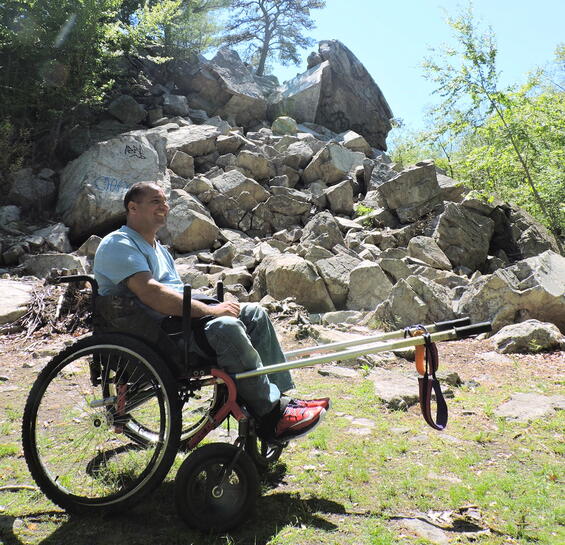
Rickshaw poles on the front of the Terra Trek wheelchair can be used to pull and lift over uneven terrain.
Another brand of chair we use is the GRIT Freedom chair. This chair also has mountain bike tires, with a single large front wheel. You use levers to move the GRIT Freedom Chair chair. The lever system saves energy and makes pushing more efficient than with standard wheelchairs. Changing your hand position on the levers gives you different options for different types of terrain. If you grab the tops of the levers you get a lot of torque, making it easier to overcome obstacles. If you grab the bottoms of the levers, it takes less effort and lets you move faster across more level areas. There are handles on the back of the chair if you need a push.
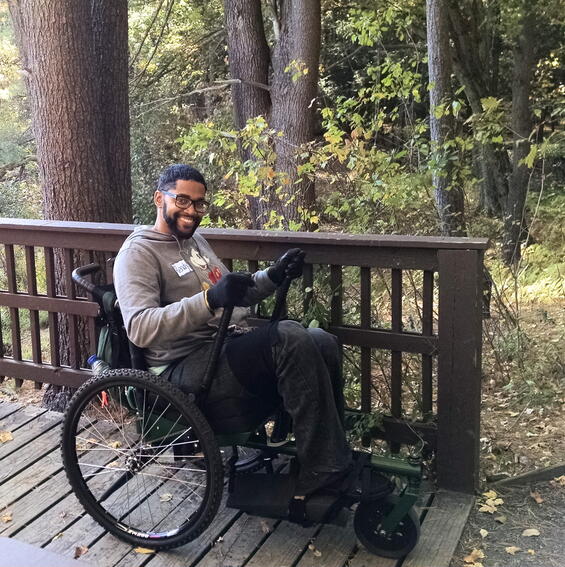
This hiker has their knees bent and their feet resting on the footplates of the GRIT Freedom chair.
The footplates are adjustable, and can be adapted to fit hikers who need their legs to be straight in front of them instead of bent.
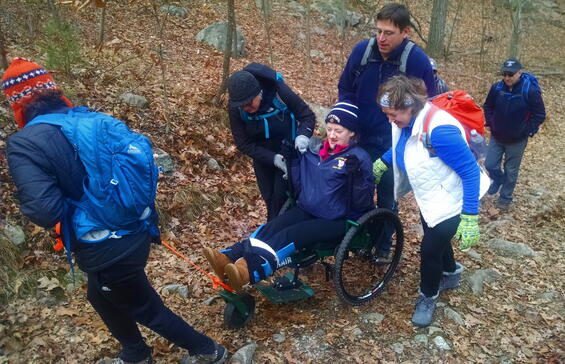
This hiker has their feet stretched straight out in front of them, and is being helped up a hill.
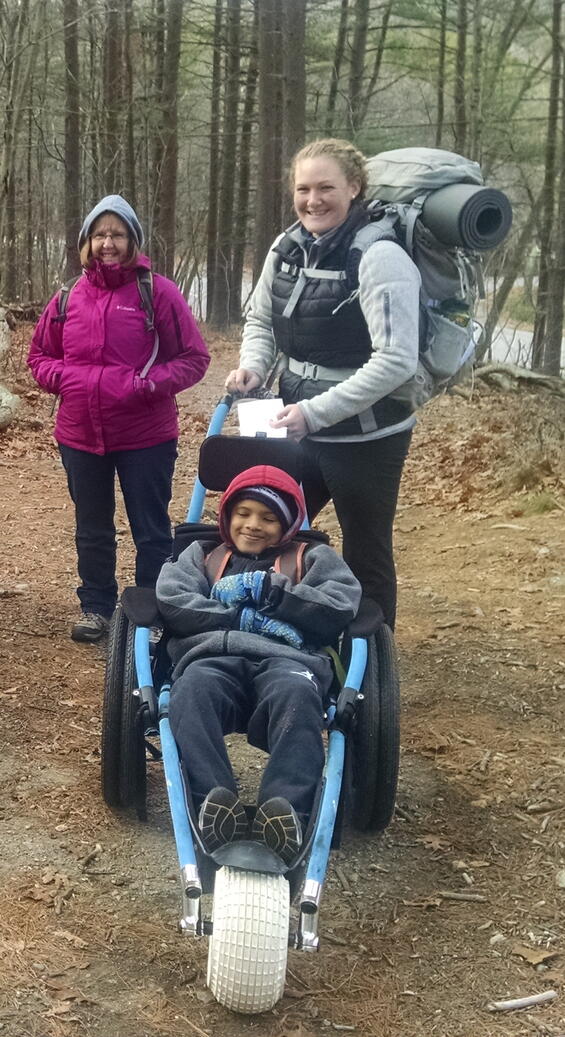
The Hippocampe wheelchair.
Another option is the Hippocampe beach and all-terrain wheelchair. This chair has double rear wheels and one large balloon tire in front. You can move the chair by hand, or be towed with a strap or pushed with a bar. The chair offers a semi-reclined pose and has a chest harness and a headrest. This chair works best on easy to moderate terrain.
Freewheel
The FreeWheel attaches to the footrest of your own manual wheelchair, letting you stay in your own chair on hikes. It lengthens the wheelbase on your chair and removes the resistance of the chair's front wheels with the ground. This makes travel easier on mild to moderate terrain with irregular surfaces like lawns, gravel, wood chips, dirt roads, curbs, and moderate trails.
The FreeWheel can only attach to chairs with a one-piece footrest, and won't work on typical medical wheelchairs with a separate footrest for each foot. It is not recommended for steep or extended grades or on trails with large roots or rocks, because the clearance and wheels of standard wheelchairs are more limited than hiking wheelchairs.
A FreeWheel raises the front of your manual wheelchair.
All-terrain crutches
This hiker is using Sidestix with sandshoe tips on a beach.
SideStix are lightweight forearm crutches with shock absorption, an articulating/rotating ankle, padded cuffs, and ergonomic hand grips. They are designed to take the strain off your shoulders and other joints and navigate uneven terrain. The shock absorbing system reduces joint compression, pain, and fatigue.
The crutches have interchangeable tips for various conditions including sand, mud, snow, and ice. Attachments include sandshoes, snowshows, spikes, rubber feet, and feet with cleats.
Tips can be switched out to match the terrain.
All-terrain walker
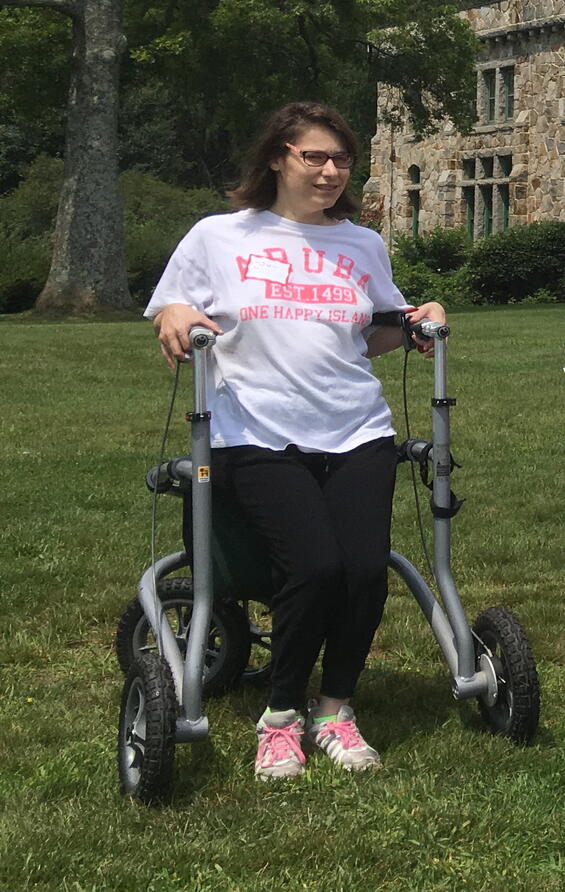
Use the seat on the Veloped to take a break during your hike.
Veloped Trek walkers are designed for more rugged terrain than standard walkers or rollators. The large wheels on the Veloped make it easier to navigate obstacles and uneven ground, and make the walker more comfortable to use. An adjustable double climbing wheel in front lets you go over obstacles up to 6 inches without lifting the walker. In all-terrain mode, the wheel has a suspension and climbing function and holds the direction steady. On more even ground, the front wheel can be raised to offer better maneuverability and easier turning.
The grips are ergonomic and adjustable, and distribute the weight you put on them evenly. They include a braking system, which can be locked while you are using the walker as a seat. The seat on the walker slides forward to give you plenty of walking space within the frame, letting you walk closer to the grip handles and giving you a more upright and ergonomically correct body posture. When you want to take a break, you can slide the seat back and use the walker to sit. The U-shaped and ergonomic grip bar offers several grip positions, and while seated it acts as a back support.
A basket on the walker can be used to carry water and hiking supplies. The grip bar can be freely height-adjusted in order to suit your body height. The walkers have adjustable grip heights from 29.5 inches to 37.4 inches, and work for hikers from 4'11" to 6'2" tall.
The Veloped offers support on uneven terrain and a way to carry hiking supplies.
Other supports
We have hiking poles and walking sticks for you to use for balance support and to help take the strain off of your lower joints.
Hiking poles can be adjusted to meet your height.
If you have a visual impairment, our staff and volunteers can act as sighted guides. You can wear a gait belt around your waist for our staff to hold on to if you need extra physical support.
